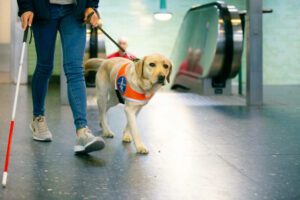In today’s fast-paced digital world, keeping your software and drivers updated is crucial for maintaining optimal system performance. Iobit Driver Booster Pro has emerged as a popular solution for users seeking to automate this process. With its user-friendly interface and powerful features, it helps identify outdated drivers and facilitates their quick update.
However, the allure of obtaining Driver Booster Pro for free through cracked versions can be tempting. Many users search for “Iobit Driver Booster Pro crack free download” in hopes of accessing premium features without spending a dime. While this may seem appealing, it’s essential to consider the potential risks and consequences associated with using cracked software.
In this article, we will explore the implications of using cracked software, the benefits of legitimate versions, and safer alternatives for keeping your drivers updated efficiently. Understanding these factors is key to making informed decisions about your software choices.
Ultimate Guide to IObit Driver Booster Pro
IObit Driver Booster Pro is a powerful tool designed to keep your drivers updated and your system running smoothly. With an extensive database, it scans your system for outdated drivers and provides one-click updates, enhancing performance and stability.
Key Features
Automatic Updates: The software automatically detects outdated drivers and offers updates without requiring user intervention.
Game Optimization: Driver Booster Pro optimizes drivers for gaming, ensuring that you achieve the ultimate performance.
How to Get Started
To enhance your experience, you can download driver booster 3 pro full crack. This provides access to premium features that boost efficiency and security for your device.
How to Download IObit Driver Booster Free
To download IObit Driver Booster Free, start by visiting the official IObit website. Navigate to the Driver Booster section, where you will find the option to download the free version. Click on the download button, and the setup file will begin to download automatically.
Once the download is complete, locate the setup file in your downloads folder. Double-click the file to initiate the installation process. Follow the on-screen instructions to install the software on your computer.
After installation, launch Driver Booster Free. It will automatically scan your system for outdated drivers. You can then choose to update them with just a few clicks, enhancing your system’s performance and stability.
Benefits of Using Driver Booster Software
Driver Booster software offers numerous advantages for maintaining and optimizing your computer’s performance. By keeping your drivers up to date, it helps ensure that your system runs smoothly and efficiently.
Enhanced Performance
Regularly updated drivers can significantly improve the performance of your hardware. This includes better graphics performance for gaming, faster connectivity for peripherals, and overall system stability.
Improved Security
Outdated drivers can expose your system to vulnerabilities. Driver Booster helps mitigate security risks by ensuring that all drivers are up to date, thus protecting your data and enhancing system integrity.
Additionally, the software streamlines the process of identifying and installing necessary updates, saving you time and effort.
Exploring the Features of IObit Driver Booster
IObit Driver Booster is a powerful tool designed to enhance system performance by updating outdated drivers. Here are some of its notable features:
| Feature | Description |
|---|---|
| Automatic Driver Updates | Automatically scans and updates outdated drivers to improve system stability and performance. |
| Large Driver Database | Access to a vast database of over 8 million drivers, ensuring compatibility with a wide range of hardware. |
| Game Ready Drivers | Optimizes drivers specifically for gaming, enhancing the gaming experience and performance. |
| Backup and Restore | Creates a backup of current drivers, allowing easy restoration if any issues arise after updates. |
| Offline Driver Update | Facilitates driver updates without an internet connection, useful for systems that are not online. |
| Scheduled Scans | Allows users to schedule regular scans for driver updates, ensuring the system remains up-to-date automatically. |
| User-Friendly Interface | Features an intuitive interface that simplifies the process of driver management for all users. |
With these features, IObit Driver Booster not only improves driver management but also enhances overall system performance, making it an essential tool for both casual users and professionals alike.
Safety Concerns Regarding Cracked Software
Using cracked software poses significant risks that users should consider seriously.
- Malware Infections: Cracked software often contains hidden malware, which can compromise your system and data.
- Legal Issues: Downloading and using cracked software is illegal and can lead to legal repercussions.
- Lack of Support: Cracked versions do not receive official updates or support, leaving users vulnerable to bugs and security issues.
- Unreliable Performance: Cracked software may not function properly, leading to crashes or data loss.
- Privacy Risks: Many cracked programs may collect personal data without consent, threatening user privacy.
Ultimately, the dangers associated with cracked software far outweigh any perceived benefits. It is safer to use legitimate alternatives.
Comparing IObit Driver Booster Alternatives
When considering alternatives to IObit Driver Booster, several options stand out for their features and user experiences. Each alternative offers unique benefits that cater to different user needs.
1. Driver Easy
Driver Easy is a popular choice for its user-friendly interface and robust driver database. It allows users to easily scan for outdated drivers and offers a free version with basic functionality. The Pro version includes automatic updates, enhancing convenience for users seeking an ultimate solution.
2. Snappy Driver Installer
Snappy Driver Installer is a free, open-source alternative that provides an extensive library of drivers. Its standout feature is the ability to work offline, making it ideal for users with limited internet access. This tool is perfect for those who prefer to delve into more hands-on driver management.
Step-by-Step Installation Instructions for Driver Booster
Follow these instructions to install Driver Booster effectively:
- Download the Driver Booster setup file from the official website.
- Locate the downloaded file in your downloads folder.
- Double-click the setup file to start the installation process.
- Choose your preferred installation language and click “OK”.
- Read and accept the End User License Agreement.
- Select the installation location or proceed with the default option.
- Click “Install” to begin the installation.
- Wait for the installation to complete; it may take a few minutes.
- Once finished, click “Finish” to exit the setup wizard.
- Launch Driver Booster from the desktop shortcut or start menu.
Enjoy improved device performance with updated drivers!
FAQ
Is it safe to download Iobit Driver Booster Pro from unofficial sources?
Downloading software from unofficial sources, including cracked versions, poses significant risks. These versions may contain malware, spyware, or other harmful components that can compromise your system’s security. Additionally, using cracked software is illegal and violates the software’s terms of service, which can lead to legal repercussions. It’s always safer to purchase software directly from the developer or authorized retailers to ensure you get a legitimate, secure version.
What are the main benefits of using Iobit Driver Booster Pro?
Iobit Driver Booster Pro offers several advantages, including automatic driver updates, a large database of drivers, and enhanced system performance. The software scans your system for outdated drivers and installs the latest versions to improve compatibility and stability. It also creates backup copies of existing drivers before updates, allowing you to restore them if something goes wrong. These features can help prevent hardware issues and enhance gaming performance.
Are there any free alternatives to Iobit Driver Booster Pro?
Yes, there are several free alternatives to Iobit Driver Booster Pro that can help manage and update drivers. Some popular options include DriverPack Solution, Snappy Driver Installer, and Driver Easy. While these alternatives may not offer all the features found in the Pro version of Iobit Driver Booster, they can effectively scan for and update drivers without cost. However, always ensure you download them from official websites to avoid potential security risks.
What risks are involved with using a cracked version of software?
Using cracked software carries multiple risks, including exposure to malware and viruses, which can lead to data loss or system damage. Cracked versions often lack customer support and updates, leaving you vulnerable to bugs and security vulnerabilities. Additionally, using pirated software can result in legal consequences, including fines or lawsuits. It’s important to consider these risks and opt for legitimate software to protect your system and data.
Can Iobit Driver Booster Pro help improve gaming performance?
Yes, Iobit Driver Booster Pro can significantly improve gaming performance by ensuring that your graphics and audio drivers are up to date. Outdated drivers can lead to lag, crashes, or poor graphics quality in games. By regularly updating these drivers, the software helps enhance compatibility with the latest games and optimizes your system’s performance, resulting in a smoother gaming experience. Many gamers find that maintaining updated drivers is essential for achieving the best performance possible.
Is it safe to download Iobit Driver Booster Pro crack from unofficial sources?
Downloading Iobit Driver Booster Pro crack from unofficial sources is highly risky. Cracked software often comes bundled with malware, spyware, or viruses that can compromise your system’s security. Moreover, using cracked software violates copyright laws, which can lead to legal repercussions. It’s always safer and more reliable to use legitimate software from the official website, ensuring you receive updates and support, as well as a secure computing experience.



